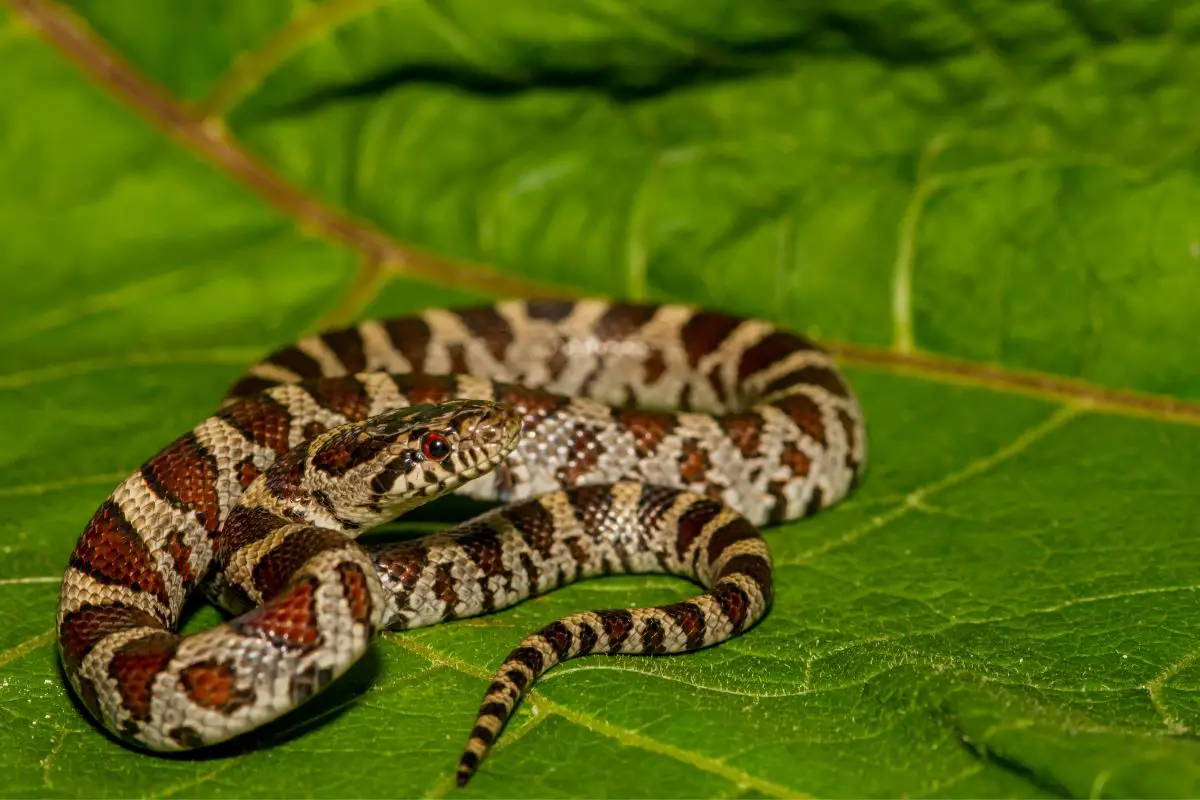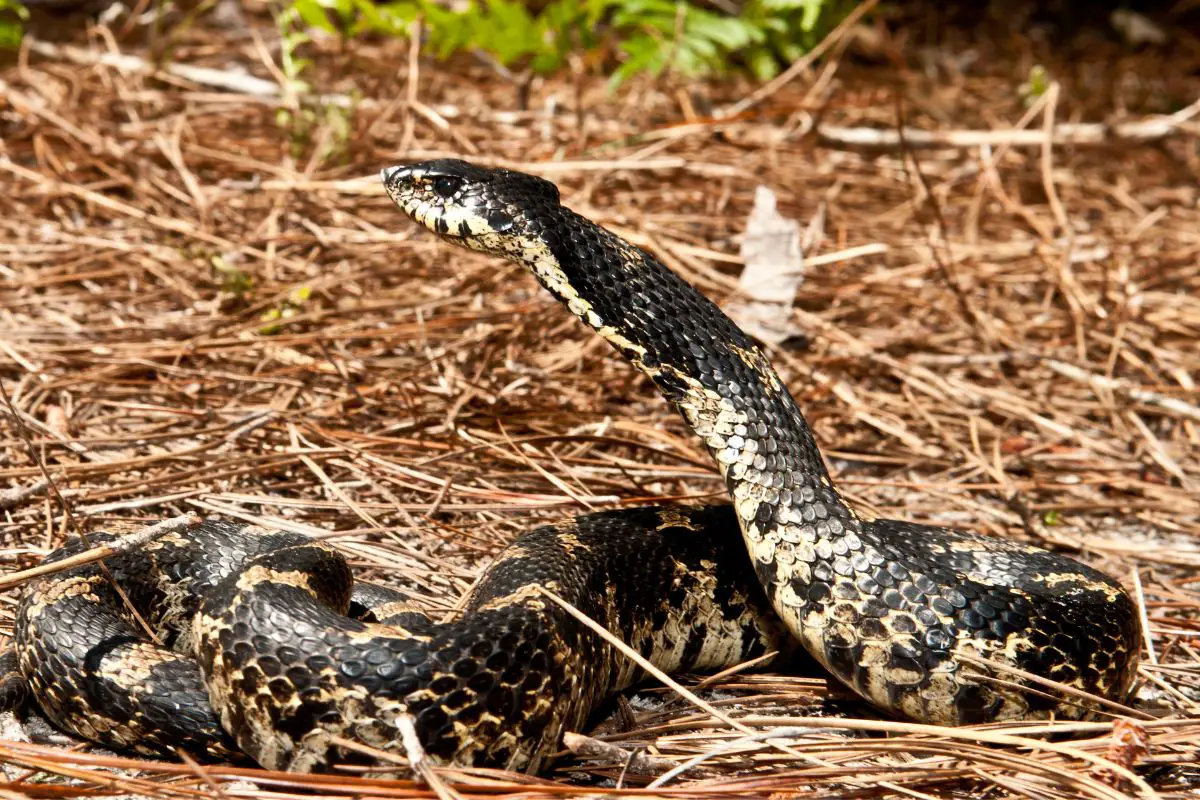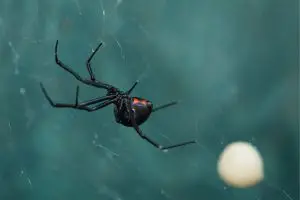Like many other states across the United States, New Hampshire is home to a massive variety of snake species that can be found on nature walks and hikes.
That often comes as a surprise to some, as many people may think that the temperate, even chilly at times, the climate of the state makes it less appealing than states such as Arizona, Florida, New Mexico.
However, snakes are a hardy group of reptiles that can survive in almost any environment. And this guide is going to show you some of the most common that you can find, as well as where exactly they can be found in the state.
Timber Rattlesnake

Starting this list with perhaps one of the most famous species, we have the timber rattlesnake.
This species is a subspecies of the wider rattlesnake family, best known for their segmented tails that, when shaken, produce their iconic rattling sound as a warning and a threat to other animals (including people).
Aside from the rattle, the timber rattlesnake is also known for being quite a large species of snake in North America, reaching anywhere from 36 to 60 inches in length, though their dark, ridged backs also make them very difficult to spot from simply walking around.
That’s probably for the best, however, as timber rattlesnakes are also the state’s only species of venomous snakes, with their bite being strong enough to paralyze and kill a human, so treat this species with the same amount of respect that you would any other dangerous animal.
This species is also critically endangered in New Hampshire thanks to habitat loss, with only one location being known for this species in the state n the south side of the white mountains.
Interestingly, this species also gives birth to live young, and also uses the same den to raise generations of young!
Ribbon Snake
Moving from one of the rarest species on this list to the most common in the state, the ribbon snake can be =found all across New Hampshire.
Except perhaps the northernmost parts, where the wetter climates that it prefers to live and hunt become a little too cold for it.
However, interestingly, it is in the ribbon snake that we start to see the mechanisms that allow snakes to survive in many climates that we would normally not expect to find them in.
These snakes are capable of hibernating in colder seasons, allowing them to wait out the worst of the winter months.
Aside from this remarkable adaptation, ribbon snakes are best known for their long, ribbon-like slender bodies (hence their appropriate name), and the thin, vertical lime-green/yellow stripes that run down their otherwise dark-scaled bodies.
These snakes usually grow to somewhere between 16 to 35 inches long.
Living around ponds, lakes, rivers, and other wetter areas, ribbon snakes prefer to eat smaller animals that live in these areas, such as frogs, newts, salamanders, spiders, and smaller fish.
Milk Snake

Perhaps one of the most striking snakes on this list, milk snakes are best known for their bands of red, black, and white stripes that wrap around the snake’s body.
These snakes live in most parts of New Hampshire, aside from the northern side of the state.
The milk snake is probably best known for its version of Batesian mimicry, where a species will often imitate a more dangerous species to defend itself from predators.
In this case, the milk snake, a species that does not produce dangerous amounts of venom, is impersonating the much more dangerous coral snake, which has enough venom to kill a person.
If you find these snakes in the wild, this is also why you may notice how they behave a lot like rattlesnakes, where they curl their body’s up into a similar shape, and even bite n a similar way.
All without having a drop of venom in it!
While this snake prefers to live in forested areas, it can live in other habitats too, which is why you’ll find this species in sandbanks, duns, steeps, and swamps in and around New Hampshire.
Northern Water Snake
Like many of the other snakes we have covered so far, northern water snakes live all across the state of New Hampshire, except for, ironically, the north of the state.
This snake is best known for its wider body, as well as the blotted dark red and black stripes that run along its body, similar to a milk snake, only far less colorful.
As the name suggests, this is a species of fish that tends to live in and around bodies of water in New Hampshire, where it feeds on amphibians and small rodents.
It would be strange to find this snake away from bodies of water than not!
These snakes often give birth to around 20 to 40 eggs in the middle of spring, with the eggs hatching towards the end of summer.
Eastern Hognose Snake

Time to mix things up in this list, with a species of snake that does live in the northernmost part of New Hampshire!
Alongside living in more northern parts of New Hampshire, the eastern hognose snake is also known to live along the Concord-Massachusetts border as well, surviving the winter by burrowing into mammal-made dens and shelters during the coldest times.
This species of hognose snake is instantly recognizable thanks to its upturned snout and distinct brow line, giving it a somewhat angry expression.
Although given that these snakes are also vulnerable to development projects across New Hampshire, from roadworks to the loss of the amphibian prey that it usually hunts, and even people killing them out of fear, we can’t exactly blame it for looking so furious!
These snakes usually grow to around 20-35 inches and tend to hunt the aforementioned small amphibians and rodents.
Northern Black Racer
Next on the list, we have the northern black racer, which might be one of the biggest snakes that we have covered on this list.
Growing from anywhere between 36-60 inches, this snake compares with the timber rattlesnake as one of the biggest in the state.
This species is also best known for its dark brown/black scales, and the only spot of color is the white/light spot around its lower head and upper neck. These are often mistaken for the northern water snake that we covered earlier.
However, the best way to tell the difference, aside from size difference, is the environment that you find them in.
While water snakes prefer waterways and lakes, northern back racers prefer to live in rockier areas and woodlands.
So the further away you are from a body of water, the more likely it is that the snake that you have disturbed is a northern racer snake.
Common Garter Snake

Finally, we have a species of snake that might be familiar to New Hampshire natives, the common garter snake!
These small 18-26-inch snakes are found across the state, with these snakes enjoying urban areas almost as much as they do woodlands and plains, it seems!
You’ll instantly be able to tell this snake apart from others by the 3 yellow-light stripes that run down its body.
Final Thoughts
Maybe you have never seen these species before. Perhaps you saw them all last week.
Either way, these species are staples of New Hampshire’s wildlife!


